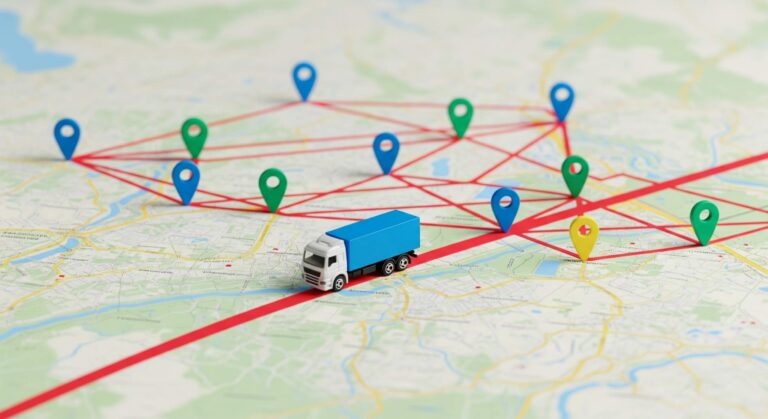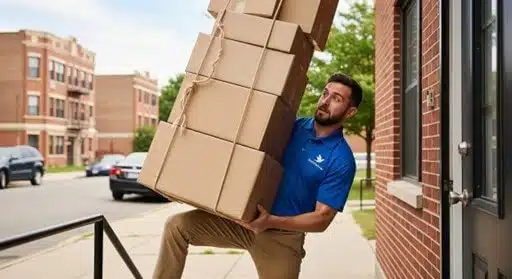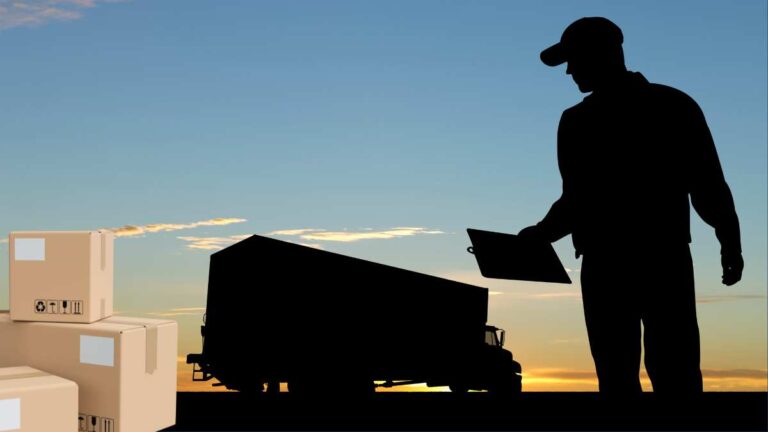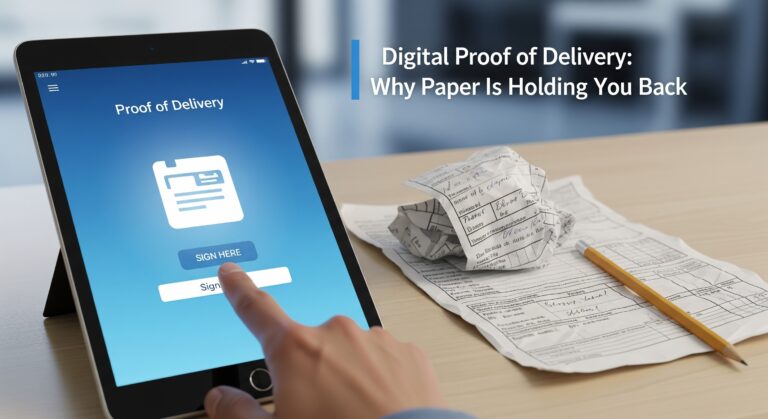Reverse logistics can be a pain for businesses. But let me remind you that what happens after a product is sent back is just as important as what happens before the sale. Reverse logistics, or return logistics, is about much more than receiving an unwanted product back.
It’s a mixture of making sure you get the maximum value out of an unwanted product, while reducing waste, and keeping customers happy, even when things don’t go as planned.
Reverse logistics is more than just returning a product, it could include repairing recycling, and disposal. While often seen as a complex and challenging aspect of the supply chain, reverse logistics plays a crucial role in driving sustainability, reducing costs, and enhancing customer satisfaction.
Throughout this article, we’ll explore the key components of reverse logistics, including return policies, product disposition, and the role of technology in streamlining operations.
Importance of implementing reverse logistics
In modern society, customers want to exercise their right to change their minds, even if it means the product is not defective.
Consumers are expecting more, and environmental concerns are taking center stage. Therefore, there is a greater need for more effective reverse logistics strategies than ever.
There is a range of benefits that can bring positive change to the bottom line of a business. If you compare two brands’ reverse logistics, the one that stands out is the one with improved reverse logistics structures.
Its biggest flex is that reverse logistics can give unwanted products value again. That means the product is not wasted.
Instead of simply discarding these items, businesses can explore various environmentally friendly disposition options, such as refurbishing, remanufacturing, or recycling, which can generate additional revenue streams and reduce waste.
However, other opportunities exist, which can easily enhance customer satisfaction and loyalty. When customers are confident that their returns and exchanges will be handled efficiently and effectively, they are likely to continue doing business with the company.
This can organically turn into more leads, customers, and repeat business.
Reverse logistics process explained
The logistics process has several steps, all of which are crucial to ensuring the goods are returned efficiently and without hassle.
Step one of the reverse logistics process is the collection of the returned product.
- This could involve drop-off points,
- arranged product pickups or
- integrating with existing distribution networks.
Step two is to inspect and assess the condition of the item. This is to help the business determine what should be done next.
- Repairing the returned items,
- refurbishing the old product,
- recycling the returned material, or
- disposing of the product.
Step three categorizes the items based on their condition and potential for reuse and resale.
This sorting process is crucial, as it helps to streamline the subsequent steps in the reverse logistics chain.
Step four involves transporting the sorted products to the appropriate facilities for further processing. Items can end up at the following locations.
- Repair centers,
- recycling facilities,
- warehouses for resale.
PRO TIP: The reverse logistics process is not free; there are associated costs for each step. Think about the transportation, storage, and processing.
Businesses should carefully manage these costs, companies can maximize the value recovered from returned products and optimize the overall efficiency of their reverse logistics operations.
Common challenges in reverse logistics
There are plenty of public examples to help logistics experts implement their reverse logistics, but the process still has challenges.
- Lack of oversight and control.
- Complexity of the process.
- Lack of standardization.
One of the biggest battles faced by businesses is not having oversight and control over the process.
In a normal supply chain, the flow of goods is more predictable. However, the reverse logistics process can be highly volatile. Think of the varying product volumes, conditions, and the reason for the return.
The reverse logistics process is extremely tricky for a business too. There are legal and environmental regulations and considerations to look at while also juggling the customer expectation.
The cost involved to return items, must not be forgotten. You don’t want the customer to pay for this. The processing time also impacts the delivery time.
A lack of standardization can also be a huge stumbling block for businesses. Each industry and small business has its own approach.
Strategies for improving reverse logistics operations
To overcome these dominant challenges in reverse logistics, no one set of approaches can work for it all.
How can a business gain visibility and transparency throughout the reverse logistics chain?
Tracking and tracing technologies, like Locate2u’s real-time GPS tracking software, are used for reverse logistics.
Western Australia Return Recycle Renew Limited (WARRRL), a not-for-profit organization, uses the software for its return logistics. As a waste collector service, WARRRL’s program Containers for Change also needed better oversight over its reverse logistics system. Collecting bins and bags from customers’ homes required precise planning.
Locate2u’s on-demand collection and real-time tracking allowed customers to make book collections through an app. This makes recycling more convenient for people, directly bringing the service to their homes.
Another effective strategy is to streamline the returns process for customers. By offering clear and user-friendly return policies and convenient drop-off or pickup options, businesses can reduce the friction associated with returns.
Hong Kong’s sports goods retailer Decathlon offers lifetime returns to keep customers happy, while British online fast-fashion retailer ASOS asks for additional costs to curb frequent returns.
Key metrics for measuring reverse logistics performance
Measuring your performance is key to your success in reverse logistics. By tracking and analyzing key metrics, there is much a business can learn how to be more efficient and effective. It also helps to identify areas where improvement is still needed.
Why you need to track your return rate
Tracking your return rate during reverse logistics is important. You get insight into how many products are returned by customers and for what reason.
It also helps you detect issues like:
- Product quality.
- Customer satisfaction.
- Effectiveness of the return process.
You can also use it to monitor the reverse process:
- Cost of reverse logistics.
- Cost of transportation during reverse logistics.
- Effectiveness of processing returned items.
- Disposal expenses.
This can help your business ensure the returns process is financially sustainable.
Timing how long it takes to return products
Another key metric is the time it takes to process a returned product from the collection process to the final disposition.
The faster the processing times, the happier the customer. This also helps cut costs for storing unwanted products.
Best practices for managing returns and product recalls
No one likes a bad experience and the same counts for returns. Just because a customer is returning an item doesn’t mean there is already a broken trust relationship.
Managing returns is a critical component of successful reverse logistics operations.
To streamline this and create as little as possible confusion, businesses must establish clear and transparent return policies. It must outline the process for customers and the conditions under which returns will be accepted.
This can help to streamline the returns process and reduce the likelihood of disputes or misunderstandings.
Do product recalls change the reverse logistics process?
More planning goes into product recalls and the reverse logistics process.
Businesses must always have a plan in place in the event of a product recall. The well-defined and coordinated plan will help everyone in the team manage the recall process, which will involve a high volume of products going through the same process at a fast rate.
There are a few things to consider:
- Establish communication channels with customers.
- Coordinate with regulatory bodies.
- Ensuring the safe and timely retrieval of affected products.
There is no time to panic. By proactively addressing product recalls, businesses can minimize the impact on their brand reputation and customer trust.
By being proactive, you can also reduce the financial and operational costs associated with the recall.
What can I learn from return logistics data?
Data and analytics will help you gain insights into the reasons for product returns and recalls. You need to first understand the cause of the problem, to implement measures to curb this.
- Improved quality control.
- Better product design.
- Enhanced customer education.
This will all help to reduce the frequency of returns and recalls in the future.
Technology solutions for streamlining reverse logistics
Technology plays a crucial role in simplifying reverse logistics operations. From automated returns processing to advanced tracking and tracing systems.
From effective communication with delivery drivers allocated to pick up the returned parcels to finding the best route for all the pick-ups during the day.
Delivery drivers must use software that enables them to communicate directly with customers. The last thing a frustrated customer wants to deal with is not being able to find the delivery driver dispatched to fetch the parcel.
Live tracking links sent to customers can also help calm the nerves when a frustrated customer anxiously awaits the delivery driver’s arrival. With this software, customers know exactly when the driver is expected and can even follow him/her for the last mile.
Lastly, route optimization is also crucial, as it helps drivers who have to deal with multiple pickups coordinate their time, money, and gas efficiently.
NOW READ: The growing importance of reverse logistics
About the author
Mia is a multi-award-winning journalist. She has more than 14 years of experience in mainstream media. She's covered many historic moments that happened in Africa and internationally. She has a strong focus on human interest stories, to bring her readers and viewers closer to the topics at hand.









